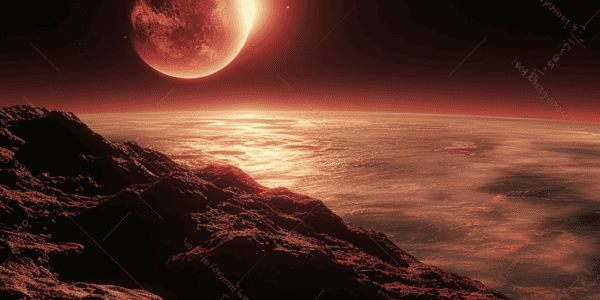New Insights into the Mysterious Gap in the Size Distribution of Super-Earths
Recent simulations have shed light on the deviation of some planets from their original birthplaces, providing insights into the relatively low number of exoplanets with sizes around two Earth radii, also known as the radius valley or gap. Remo Burn, an exoplanet researcher at the Max Planck Institute for Astronomy (MPIA) in Heidelberg, and lead author of the article published in Nature Astronomy, highlighted the shortage of exoplanets with sizes around two Earth radii, a phenomenon discovered six years ago through a reanalysis of data from the Kepler space telescope. These findings open new avenues for understanding the dynamics of planetary systems and the factors influencing the size distribution of exoplanets.
Study Suggests Trappist-1 Planets Unlikely to Support Life
Recent study suggests that the likelihood of life existing within the Trappist system is slim, as the planets are more likely to be barren and stripped of their atmospheres. Red dwarf stars present unique challenges for habitable worlds, with intense solar flares subjecting nearby planets to high levels of X-rays and other hazardous radiation. Observations from the James Webb Space Telescope confirm the absence of significant atmospheres on the innermost planets, with computer simulations estimating rapid atmospheric evaporation on the outer exoplanets. The study underscores the challenges posed by the system’s proximity to a red dwarf star and sheds light on the harsh realities that may limit the habitability of planets orbiting red dwarfs.
Orbital Resonance: The Cosmic Dance of Planets in Harmony
Orbital Resonance: The Cosmic Dance of Planets in Harmony By Lexi Mural February 3, 2024 Planets orbiting their parent stars often exhibit remarkable patterns in their orbits, creating a mesmerizing gravitational dance known as orbital resonance. Recently, astronomers studying a…
Groundbreaking Discovery of Multi-Planet Star System
Scientists have made a groundbreaking discovery of a multi-planet star system, offering a rare glimpse into the formation and behavior of planets around a newly formed star. The star, TOI-1136, is a dwarf star located in the Milky Way galaxy,…
Astronomers Discover Water Vapor in Atmosphere of Smallest Exoplanet Ever Detected
Astronomers using the NASA/ESA Hubble Space Telescope have made a groundbreaking discovery, observing water vapor in the atmosphere of the smallest exoplanet ever detected with such a feature. The planet, named GJ 9827d, is approximately twice the size of Earth…
NASA Discovers 85 New Exoplanets with Potential for Alien Life
Scientists have made a promising breakthrough in the search for alien life, as NASA satellite data has led to the discovery of 85 new ‘exoplanets’ by experts from the University of Warwick. These exoplanets, which are planets outside our solar…
Rumors Circulate About Discovery of Signs of Life on Another World by James Webb Space Telescope
Rumors have been circulating that the James Webb Space Telescope has discovered signs of life on another world, sparking excitement and speculation within the scientific community. While no definitive evidence has been confirmed by NASA officials, the potential for a…
Seeking Another Earth: Look for Low Carbon Dioxide
Seeking another Earth? Look for low carbon dioxide What do we need to find if we want to discover another Earth? If an exoplanet is too far away for even the most powerful telescopes to search directly for water or…
ATLANTIC SKIES: Our solar system’s nearest stellar neighbour
ATLANTIC SKIES: Our solar system’s nearest stellar neighbour By Glenn Roberts | Posted: Jan. 4, 2024, 9:38 a.m. | Updated: Jan. 4, 2024, 9:38 a.m. | 10 Min Read A recent image captured by the NASA/ESA Hubble Space Telescope has…
New Research Suggests CO2 Levels in Planet Atmospheres Could Indicate Habitability
New research has suggested that the levels of carbon dioxide (CO2) in a planet’s atmosphere relative to its neighboring planets could indicate the presence of liquid water, potentially signifying habitability. The findings, published in the journal Nature Astronomy, offer a…










